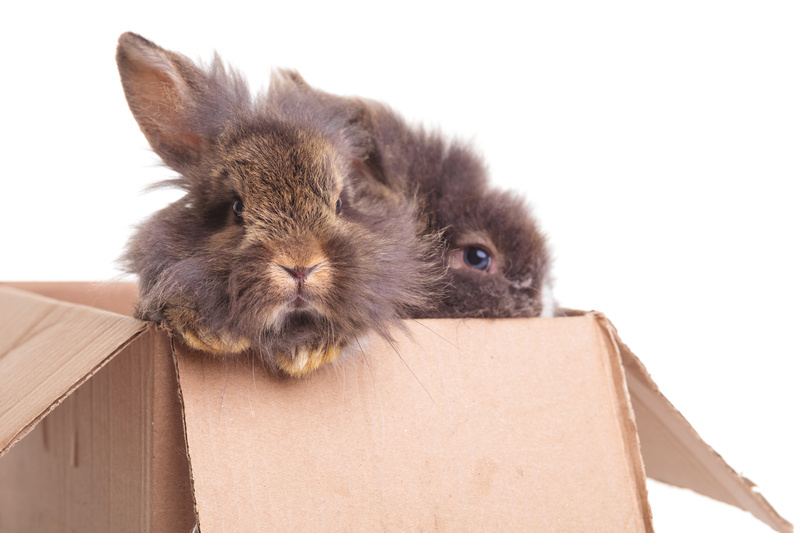Masterful Packing: The Key to a Stress-Free Move
Posted on 18/05/2025
Masterful Packing: The Key to a Stress-Free Move
Moving to a new home is both an exciting journey and a logistical challenge. Whether you're relocating across town or preparing for a cross-country adventure, one truth remains constant: masterful packing is the key to a stress-free move. With the right techniques, careful planning, and a positive mindset, you can transform a daunting process into a smooth and organized transition. This comprehensive guide will walk you through the secrets of expert packing, ensuring your next move is both efficient and anxiety-free.

Why Masterful Packing Matters
All too often, moving day arrives, and you find yourself frantically tossing possessions into boxes, hoping nothing breaks and nothing gets left behind. However, investing time in methodical packing pays dividends in less stress, lower costs, and reduced risk. Let's delve into why efficient packing can make all the difference:
- Saves Time and Energy: An organized approach to packing helps you avoid last-minute chaos.
- Protects Your Belongings: Careful wrapping and strategic boxing reduce the risk of damage during transit.
- Maximizes Space: Smart packing ensures you use every inch--often lowering transportation costs or the number of trips you need.
- Eases Unpacking: Labelled, sorted, and well-packed boxes make settling into your new home a breeze.
- Reduces Stress: Knowing everything is under control does wonders for your peace of mind.
Essential Supplies for Effective Packing
Before you start, assemble everything you'll need for expert packing. Quality materials do more than just hold your belongings--they protect, organize, and add efficiency to the process.
- Sturdy Boxes: Invest in various sizes. Small boxes for heavy items, medium for general goods, and large for light, bulky belongings.
- Bubble Wrap and Packing Paper: Cushion fragile possessions and keep items clean.
- Packing Tape and Marker Pens: Secure your boxes and mark contents clearly.
- Labels and Stickers: Identify boxes by room or priority to simplify unpacking.
- Scissors and Box Cutters: Make shaping and opening boxes easier and faster.
- Furniture Covers and Blankets: Protect larger items from scratches and dust.
Packing Like a Pro: Step-by-Step Strategies
1. Declutter Before You Pack
_One of the secrets to masterful packing is starting with less._ Use your move as an opportunity to streamline your life. Go through each room and decide what to keep, sell, donate, or discard. Remember--the less you move, the less you pack, saving time, energy, and money.
2. Create a Room-by-Room Packing Plan
Instead of tackling your whole home at once, break the process into manageable tasks by packing room by room. This keeps things organized and ensures you don't overlook essential items.
- Start with Storage Areas: Begin with attics, basements, and seldom-used closets.
- Continue to Non-Essentials: Pack out-of-season items, decorations, or rarely-used dishes first.
- Leave Daily Essentials for Last: Only pack your everyday toiletries, clothes, and kitchenware in the final days.
3. Master the Art of Box Packing
Great moving experiences come down to intelligent packing techniques. Here's how to do it right:
- Heavier Items on the Bottom: Place books, pots, and other weighty goods at the base, adding lighter objects on top.
- Don't Overfill Boxes: Prevent boxes from bulging and keep them easy to carry by capping their weight at about 50 lbs.
- Protect Fragile Items: Wrap dishes, glassware, and electronics in bubble wrap or paper, and fill any gaps with towels or soft fabric.
- Seal Boxes Securely: Run tape along all seams, and add extra tape to the bottom for support.
- Label Every Box: Mark boxes with their contents and intended room, and note if they contain fragile items.
4. Special Strategies for Valuables and Documents
Some things--like jewelry, heirlooms, and critical paperwork--deserve extra care. _Pack valuables in a secure, clearly labeled box and keep it with you during the move._ Use file folders for documents, and consider a fireproof safe for anything irreplaceable.
5. Disassemble Large Items Carefully
For major pieces--beds, tables, shelving--disassemble where possible to save space and prevent damage. Keep screws and hardware in labeled bags taped to the furniture or stored in a dedicated "parts" box.
How to Pack Different Household Items
Packing Clothes Efficiently
- Wardrobe Boxes: Hang clothes directly for easy transfer from closet to box and then to your new home.
- Roll, Don't Fold: Rolling minimizes wrinkles and maximizes suitcase or box space.
- Use Luggage: Don't waste valuable suitcase space--pack off-season or less-used clothing inside them.
Protecting Kitchenware and Fragile Items
- Dish Packs: These heavier-duty boxes are designed for dishes and glass.
- Plate Packing: Stand plates vertically, separated by paper or bubble wrap.
- Fill Gaps: Prevent shifting by stuffing additional packing material into empty spaces.
Handling Electronics and Appliances
- Original Packaging: If you saved boxes for TVs or computers, use them for maximum protection.
- Cords and Accessories: Bundle, label, and tape them to the respective device or keep in a dedicated bag.
- Defrost Appliances: Empty, clean, and dry refrigerators and freezers in advance.
Masterful Packing for a Moving Day Win
Staging Boxes for the Big Day
As moving day approaches, stage your packed boxes in a central location or near the exit. This speeds up loading, reduces moving costs if you're being charged by the hour, and keeps your old home tidy for a final inspection.
Loading Your Moving Vehicle Like a Pro
To get the most from your transport, follow a logical loading sequence:
- Large, Heavy Items First: Start with furniture and appliances on the floor of the van or truck.
- Box Placement: Place heavier boxes towards the front, lighter ones on top and near the back.
- Secure Loose Items: Use straps or ropes to prevent shifting during transit.
- Fill All Gaps: Soft goods like pillows or blankets help pad empty spaces and prevent movement.
Common Packing Mistakes to Avoid
- Procrastinating: Start earlier than you think you need to--packing always takes longer than expected.
- Underestimating Supplies: Having too few boxes or insufficient wrapping can delay your progress and endanger your belongings.
- Ignoring Labels: Unlabelled boxes lead to frustration and frantic searches at your new place.
- Overpacking Boxes: Boxes that are too heavy are prone to breaking and tough to lift safely.
- Forgetting an Essentials Box: Pack a bag with overnight items, basic toiletries, and important chargers for the first night in your new home.
Eco-Friendly Packing Tips
Mindful packing isn't just good for your move--it's better for the planet. Here are ways to protect your belongings and the environment:
- Repurpose Containers: Use baskets, tote bags, and suitcases you already own.
- Opt for Reusable Materials: Towels, blankets, and clothing make great padding.
- Choose Recyclable Supplies: Buy boxes and paper that can be recycled or reused.
- Donate Unused Goods: Trim your belongings by gifting, selling, or donating items before you move.
Should You Hire Professional Packers?
For some, the prospect of packing an entire house on their own is overwhelming, or time is simply too tight. Here's when hiring professionals makes sense:
- Lack of Time: If you have a tight schedule or are facing a last-minute move, pros can expedite the process.
- Specialty Items: Large, valuable, or delicate items--such as pianos or art--may warrant professional expertise.
- Health or Mobility Issues: If physical limitations prevent you from lifting or bending for extended periods.
Professional packers bring experience and specialized materials, often ensuring faster, safer packing. However, if you're organized and prepared, DIY packing is cost-effective and rewarding.

Unpacking: The Final Step to a Hassle-Free Move
_Your move doesn't end when the last box is delivered--masterful packing also sets you up for swift, stress-free unpacking._ Unpack essentials first, then work room by room. Setting up beds and basic kitchen items on day one helps your new house feel like home immediately.
Remember to recycle moving boxes and materials or offer them to others for reuse. The less clutter you keep, the more serene your new life will feel.
Conclusion: Packing Like a Pro Makes All the Difference
A stress-free move is no accident--it's the result of masterful packing, deliberate planning, and staying calm when challenges arise. By decluttering, gathering the right supplies, and following proven packing strategies, you can protect your possessions and your peace of mind. Whether you're packing a studio or a spacious house, these tips ensure your belongings arrive safe, your move stays on schedule, and you settle into your new space with ease.
For more moving tips, checklists, and resources on expert packing techniques, bookmark this page. Share your own moving experiences and advice--every journey is unique, but masterful packing truly is the key to a stress-free move for everyone.



